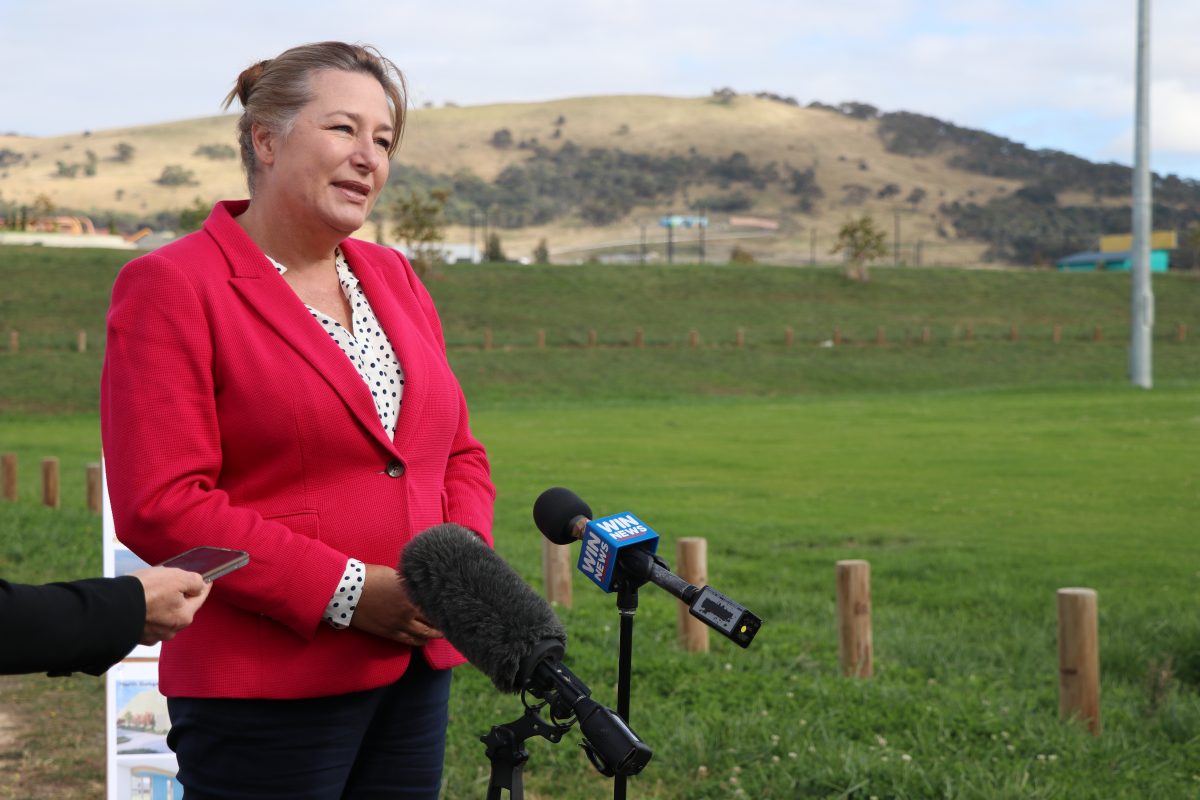
Narrabundah College Library: A new report has recommended the ACT Government stop including libraries and specialist teaching spaces when calculating the capacity of public schools. Photo: Supplied.
A new report has found libraries and specialist spaces should not be included in school capacity calculations and the government should more carefully plan the construction of new schools to avoid construction in the first few years of their operation.
The recommendations were among 35 made by the ACT Legislative Assembly’s Standing Committee on Education and Community Inclusion following an inquiry into the management of the Territory’s school infrastructure.
Its release followed the publication of the ACT Schools Census earlier this week which showed booming schools in Canberra’s north – including the Belconnen and North/Gungahlin networks – and schools well below capacity in the Tuggeranong region.
Capacity issues were referenced frequently in the committee’s recommendations and were also raised in a number of schools’ submissions and presentations to the inquiry.
Garran Primary School, for example, had raised concerns about a “sea of demountables” taking up outside space while parents at Harrison School worried about specialist teaching spaces being used for purposes other than what they were intended for, such as English classes being taught in a kitchen/food tech classroom, social science in dedicated maths classrooms, and PE/Health in food prep classrooms.
As well as the removal of libraries and specialist teaching spaces from the total school capacity calculation, the committee recommended the government ensure these spaces are adequate before increasing a school’s capacity.
It called on the government to ensure schools always maintain the capacity to accept the transfer of students from outside the Priority Enrolment Area (PEA) if they had a reason for requesting the transfer and made recommendations that touched on increasing the number of Technology classrooms and outdoor learning spaces.
It recommended the government articulate and communicate to the wider community medium and long-term plans to address capacity issues at schools.
It also recommended government expedite a feasibility study for further college capacity in north Canberra and, if required, the construction of additional college facilities in Canberra’s north.
The Schools Census data showed colleges are near full, with Canberra College at 97 per cent and Narrabundah College at 87 per cent.

Minister for Education Yvette Berry was forced to defend school capacity calculations at new schools in Gungahlin’s north earlier this year. Photo: ACT Government.
The committee also called on the ACT Government to more carefully plan the construction of new schools to better meet size demands to avoid further construction in the early life of the school.
Earlier in the week Minister for Education Yvette Berry was forced to defend the government’s forward-planning after it was announced Margaret Hendry School would be expanded only four years after it opened.
According to the latest calculations, that school is already running at 81 per cent.
Margaret Hendry is predicted to grow by more than 1200 students by 2030 and is being expanded to host an additional 600 students by the start of the 2023 school year. Next door, a high school will be built to open for the 2024 school year, although this school will only be able to accommodate 800 students.

Margaret Hendry School is running at 81 per cent capacity just four years after it opened. Photo: Supplied.
Ms Berry was asked in early April if it would not have been better to build a high school next door large enough to accommodate all students from the primary school. At the time, she said she was confident in the capacity calculations which had taken place and noted other schools, including those yet to be built in the region, could take students if needed.
She also noted not all students would remain in the public system for secondary school.
More broadly, Ms Berry said she was not yet able to respond to the findings of the report given it had only just been released. However, she said the government would respond comprehensively in due course.
Several of the report’s recommendations also addressed issues such as construction materials, digital resources, Universal Design principles and even how schools are used as polling places.
It recommended the government provide capital funding for school kitchen facilities for on-site food preparation to facilitate the free school breakfasts and lunches program, and that appropriate, comfortable, and secure amenities are provided for staff.
Original Article published by Lottie Twyford on Riotact.




